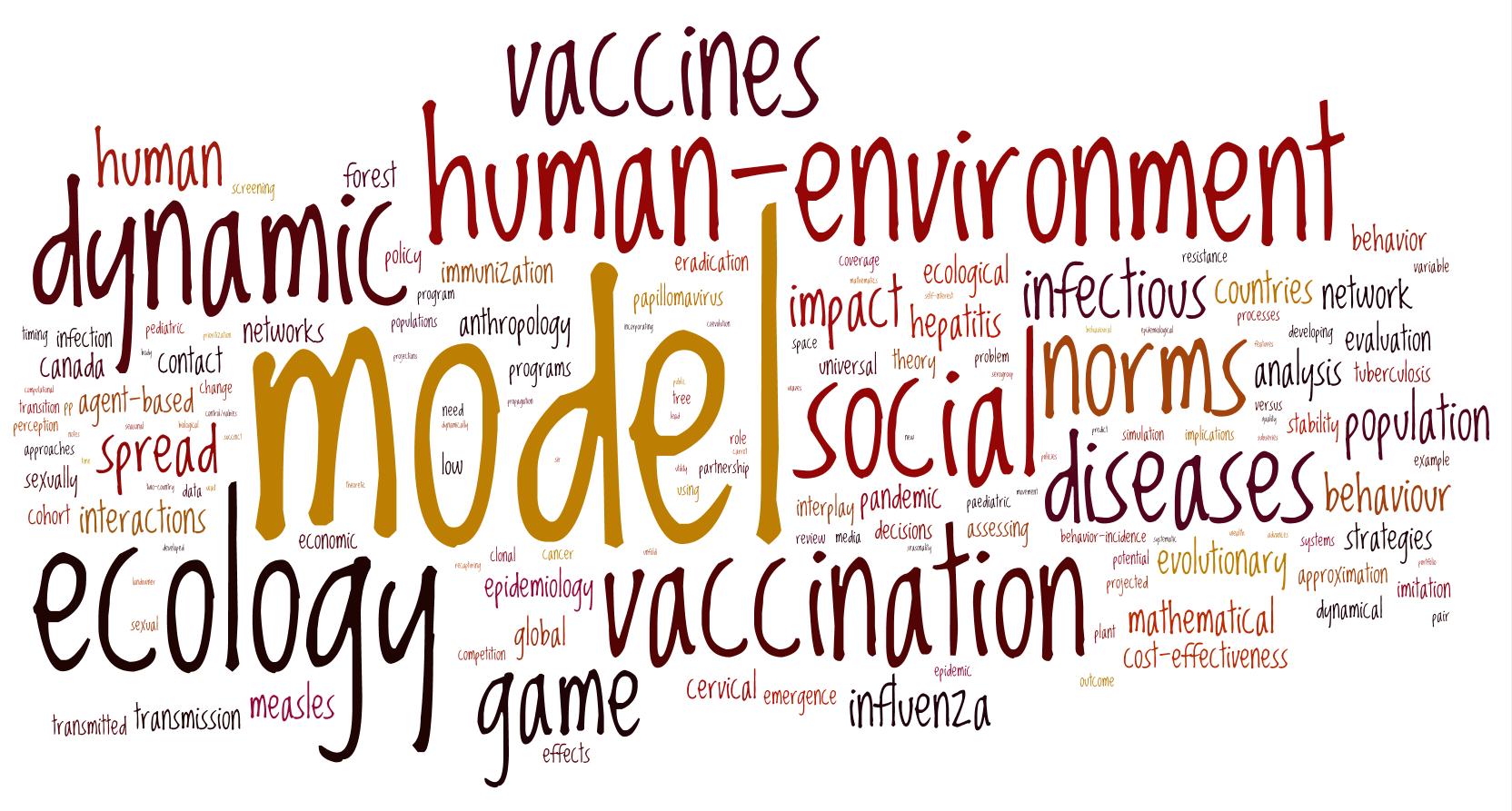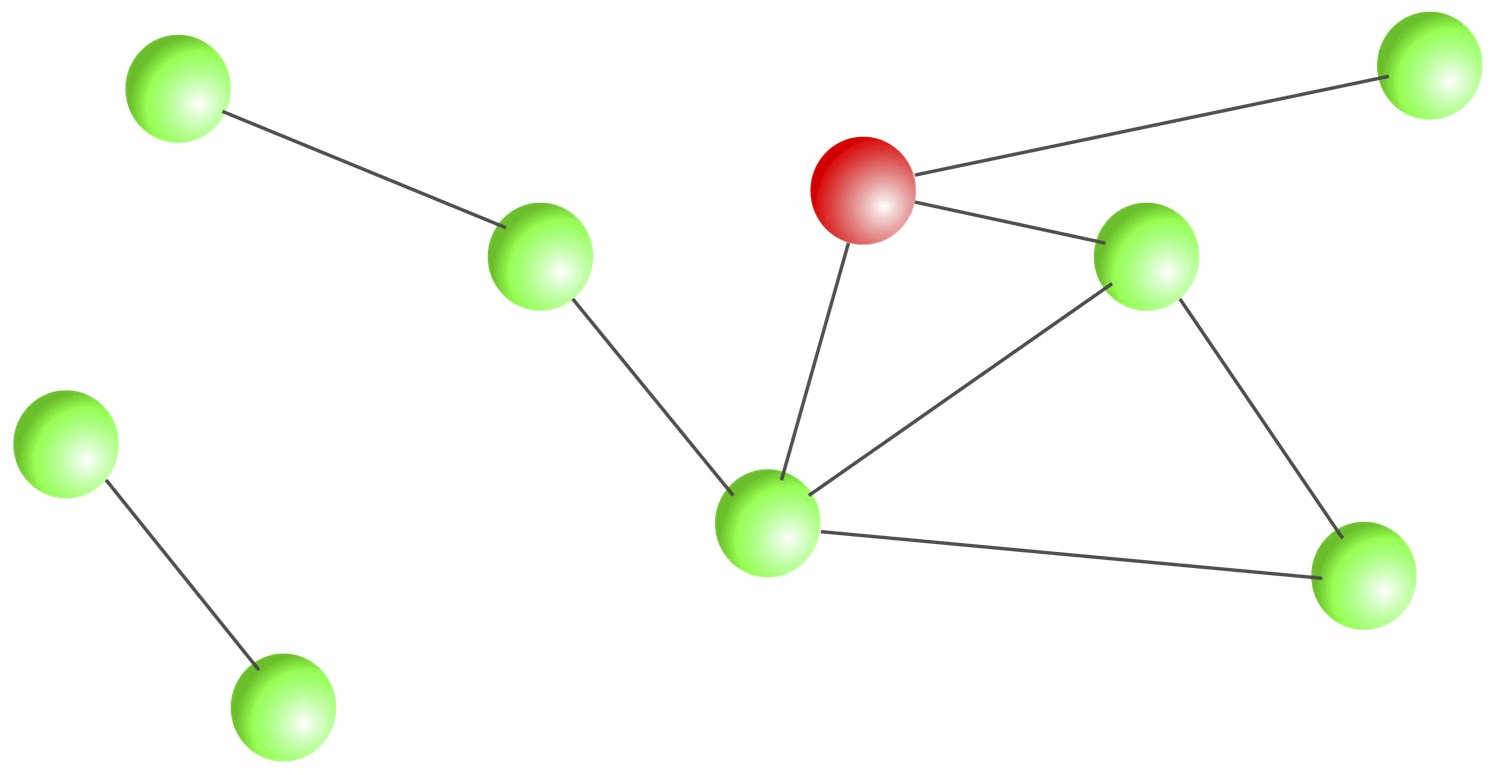
Research Interests
I am a mathematical biologist who studies natural systems, human systems, and how they interact. I am also interested in exploiting new data sources and (relatively) new methods to study social dynamics, such as online social media and machine learning. I like to mess around in other scholars' fields. Examples of research projects can be found at the bottom of this page, and recent papers appear under my Publications page. Some of my research interests include:
- Applications of dynamical systems to data science
- critical slowing down in online social media, social networks in coupled human-and-natural systems
- Coupled human-environment systems (a.k.a. coupled human-and-natural systems, socio-ecological systems)
- land use, deforestation, vaccination policies, disease dynamics, and sustainability
- Applications of game theory to problems in sustainability and human health
- strategic interactions and how they influence the health of human populations and ecological systems; common-pool resource problems
- Incorporating social processes into behavioural models
- social norms, social learning, and how they modify dynamics of coupled human-disease or human-environment systems and dynamics of groups
- Infectious Disease Modelling
- compartmental differential equation models, agent-based models, network models, stochastic models, spatial models; their application to infectious disease dynamics and vaccination policies
- Ecological Modelling
- mosaic ecosystems, modelling of clonal plant growth, agent-based spatially-explicit forest models, land use models
My research program is centred on applying mathematics to real-world problems in infectious diseases, ecology, social science, and sustainability. This is carried out through direct collaborations with epidemiologists, ecologists, and public health researchers and also by close attention to data, in order to understand observed patterns and/or to verify mathematical models. This work is interdisciplinary by nature. Interdisciplinary collaborations are necessary if mathematical modelling is to inform policy. However I am also interested in basic scientific questions, ie, in using mathematical models to further basic scientific understanding of infectious disease dynamics or ecological systems.
Mathematical models can be used to generate quantitative predictions and qualitative insights into epidemiological or ecological systems. Alternative mechanisms can be explored through modelling in order to understand real-world dynamics. In epidemiology, modelling can be used to assess strategies of disease control without resorting to costly or ethically impossible experiments. In situations where stochasticity or the individual-based nature of populations are thought to be important for dynamics, I instead use individual-based (agent-based) simulations or stochastic (Monte Carlo) models. Many of these projects are carried out collaboratively.
I currently study, or have studied previously, diseases such as measles, pertussis, chickenpox, rubella, pandemic influenza, smallpox, HIV, hepatitis A, and human papillomavirus.
My research has been covered by The New York Times, USA Today, the BBC, and other major news organizations. I have also received various awards including a Marshall Scholarship, an NSF Graduate Research Fellowship, a CIHR New Investigator Award, and a Ministry of Research and Innovation Early Researcher Award. I involve undergraduate students, graduate students, postdocs, and research associates in these exciting research projects and most of my students publish papers based on their joint work with me.
Current and Previous Funding Sources
- NSERC (Natural Sciences and Engineering Research Council)
- CIHR (Canadian Institutes of Health Research)
- MRI (Ministry of Research and Innovation)
- FDA (Food and Drug Administration of the USA)
- WHO (World Health Organization)
- The Bill and Melinda Gates Foundation
- CFI (Canada Foundation for Innovation)
- GlaxoSmithKline Canada
Selected Media Links
- National Public Radio
- The BBC
- Scientific American
- USA Today
- The New York Times
- Plus more recent stuff as per searching for new items on Google.
Examples of Research Projects
Coupled human-environment systems Mathematical models of natural populations, ecological systems, or environmental systems on their own are relatively well-developed. However, the impact of human interventions, if it is represented at all,  is often represented through fixed parameters that do not change in response to the natural system dynamics. Likewise, mathematical models of human behaviour are widespread but often assume that the environment that shapes human interactions and modifies their outcomes to be fixed. Human-environment system models seek to couple natural systems models with human behavioural models to better capture the mutual feedback loop between natural systems dynamics and human behavioural dynamics. These often take the form of nonlinear differential equations that can be analyzed using dynamical systems techniques, but could also take the form of agent-based models.
is often represented through fixed parameters that do not change in response to the natural system dynamics. Likewise, mathematical models of human behaviour are widespread but often assume that the environment that shapes human interactions and modifies their outcomes to be fixed. Human-environment system models seek to couple natural systems models with human behavioural models to better capture the mutual feedback loop between natural systems dynamics and human behavioural dynamics. These often take the form of nonlinear differential equations that can be analyzed using dynamical systems techniques, but could also take the form of agent-based models.
Incorporating human behaviour into epidemic models: Changing patterns of human behaviour can have a big influence on transmission dynamics, as evidenced by the Measles-Mumps-Rubella vaccine scare in Britain or by changes in the public contact behaviour in the face of a SARS outbreak. For many real-world scenarios, incorporating human behaviour into epidemic models is challenging but ultimately necessary.  In this area, I have been working on applying game theory to modelling vaccinating behaviour. Individual vaccination decisions collectively determine the prevalence of a disease in a population and hence the probability that an unvaccinated individual eventually becomes infected. Therefore under a voluntary vaccination policy, individuals are effectively engaged in a strategic interaction with one another, since their vaccination decisions influence the health states of others in the population. This situation can be formalized with game theory. My work in this area develops game theoretical and game theory-inspired approaches that incorporate compartmental epidemic models into classical game theoretical frameworks.
In this area, I have been working on applying game theory to modelling vaccinating behaviour. Individual vaccination decisions collectively determine the prevalence of a disease in a population and hence the probability that an unvaccinated individual eventually becomes infected. Therefore under a voluntary vaccination policy, individuals are effectively engaged in a strategic interaction with one another, since their vaccination decisions influence the health states of others in the population. This situation can be formalized with game theory. My work in this area develops game theoretical and game theory-inspired approaches that incorporate compartmental epidemic models into classical game theoretical frameworks.
Epidemics on networks and lattices: Spatial structure can significantly alter population dynamics, however explicit spatial models tend to be analytically intractable.  Some of my research focuses on spatial dynamics of ecological and epidemiological systems, and in particular the development of analytical approximations (e.g. pair approximations) to explicit spatial models. I am also interested in network models of sexually transmitted disease spread.
Some of my research focuses on spatial dynamics of ecological and epidemiological systems, and in particular the development of analytical approximations (e.g. pair approximations) to explicit spatial models. I am also interested in network models of sexually transmitted disease spread.
Nonlinear disease dynamics: Timeseries of infectious disease incidence or mortality can often reveal interesting temporal patterns, including regular oscillations at various frequencies, irregular outbreaks, candidates for chaotic oscillations, and shifts between such patterns induced by demographic changes. These systems and their time series data sets represent ideal subjects for studying nonlinear population dynamics via differential equation models, Monte Carlo simulations, individual-based simulations, and/or spatial models. Models can be used to illuminate the governing mechanisms behind transmission dynamics and hence increase our predictive capacity.
Offspring size distributions in clonal plants: Classical offspring size theory (eg Smith-Fretwell) predicts that organisms obeying certain fitness functions should produce a single optimal offspring size. However some organisms which obey these fitness functions, such as Scirpus maritimus (a clonally reproducing wetland plant), instead produce a lognormal distribution of offspring sizes. My work here is devoted to using mathematical models to understand the reasons for the observed variation and to reconcile models with data.